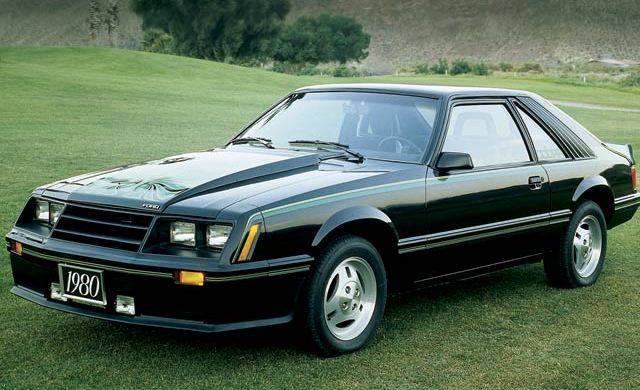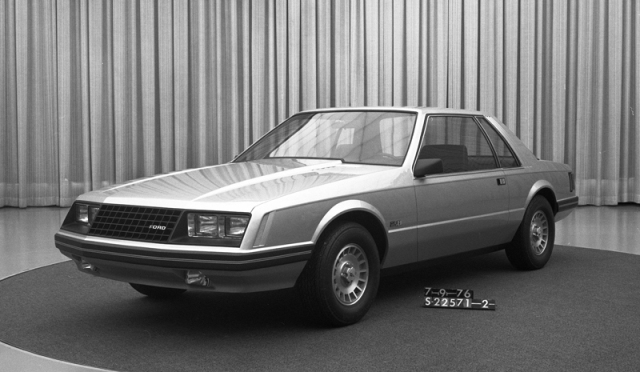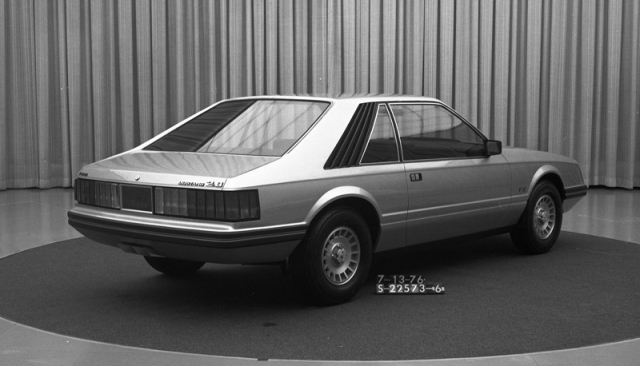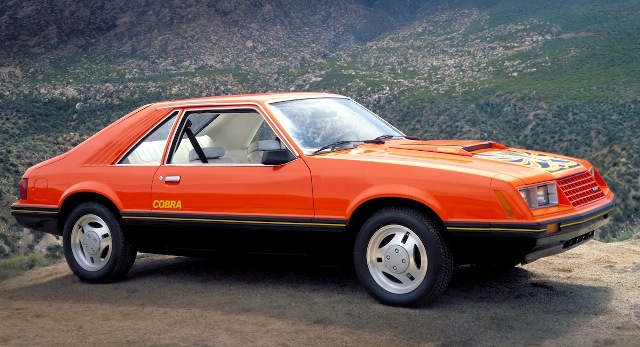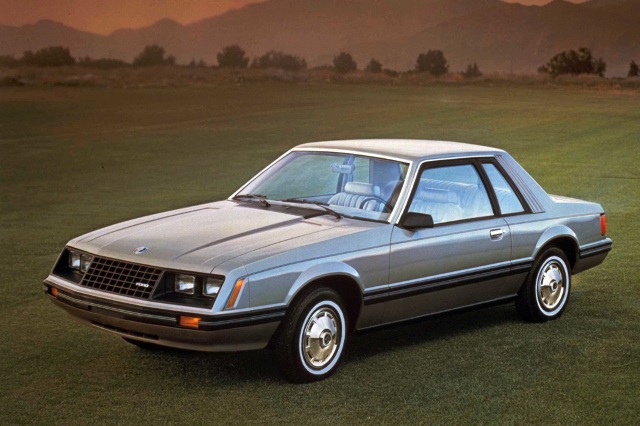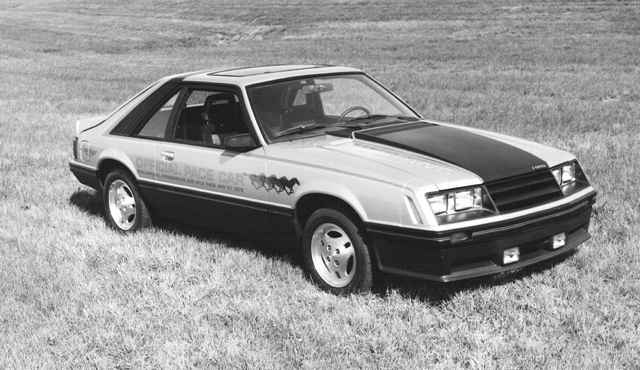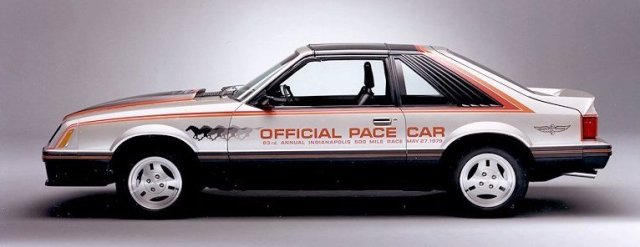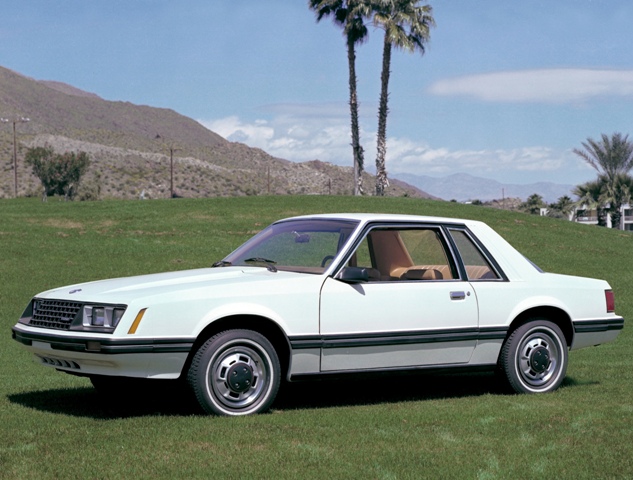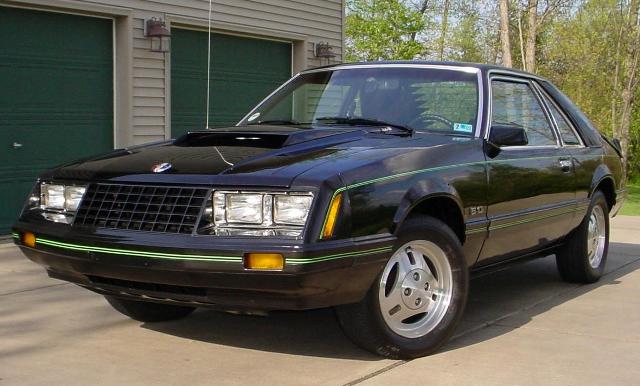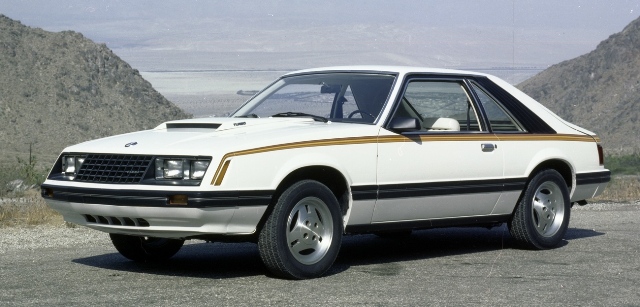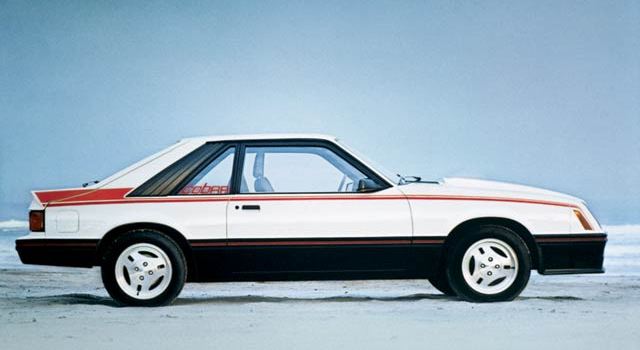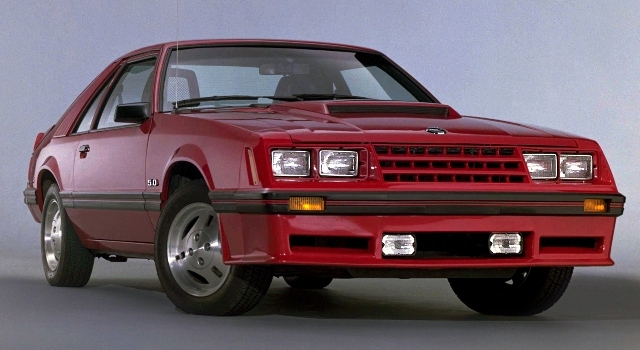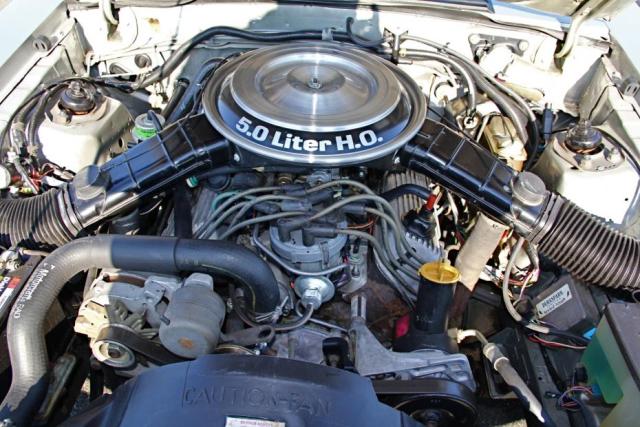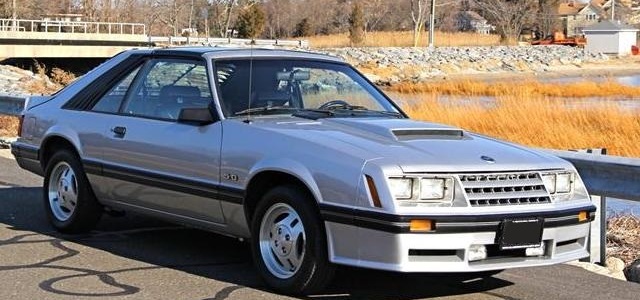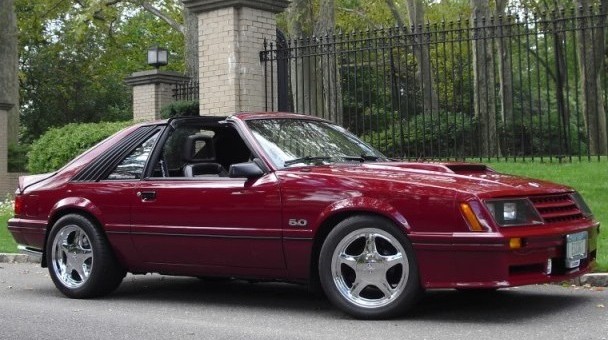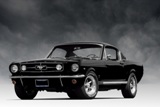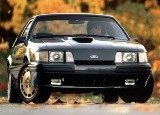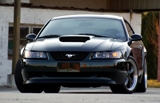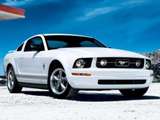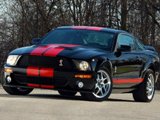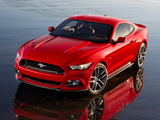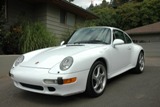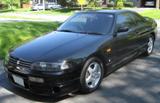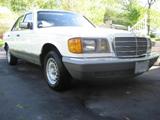Enthusiast's Corner
1979-1982 Ford Mustang: A new direction with a dose of European flair
Written by James Dolan
As the 1978 model year came to a close, so too did the darkest chapter in the Mustang’s history. Ford was ready to move on from the Mustang II and so were many car enthusiasts. The downsized Mustang II would never capture the hearts of car enthusiasts or Mustang lovers. Although the car sold fairly well it certainly wouldn’t be missed, as it represented a Mustang that promised so much but delivered so little. This wasn’t a unique problem for just the Mustang or Ford Motor company for that matter, many automobiles from the 1970’s were just plain abysmal. All manufacturers during the 70’s spent most of their resources tying to meet nearly impossible emission standards to the detriment of product development and quality. But the Mustang was viewed as something special so expectations of quality and performance were much higher. To carry the Mustang into the future successfully Ford needed to start over with a clean sheet of paper and leave the past behind. Radical new safety, emissions and fuel economy regulations meant that the methods used to deign a new Mustang had to be different.
As far back as 1972 the Ford Motor Company knew that the automotive industry would experience some profound changes regarding how vehicles are regulated and therefore built. With sporadic fuel shortages plaguing North America and foreign vehicles gaining in popularity year after year the company understood that the traditional way of doing business and the mentality of bigger and heavier was better were gone forever. Down sizing and weight reduction was the key to success, the trick however was to do this and maintain the interior volume that Americans were accustom too. From this the Fox chassis program was born in 1973 and right from the early days everyone knew that the next Mustang would be a big part of this program.
The Fox platform was the successor for the Falcon platform that was introduced in 1960 and was the basis for the first Mustang. For cost savings, the Fox platform was intended to be used for a variety of different vehicles. As such this chassis had to be light weight, space efficient, cost effective and sporty. The directive of this program was to lower manufacturing costs by utilizing as many components as possible between all Fox-based vehicles and to improve interior space while decreasing exterior size. The first cars to use this new innovative platform would be the Mustang and a pair of sedans to replace the Maverick and Comet. Early on the Fox program was tailored around the needs of the Mustang since any advantage to the Mustang would benefit any other car that would have been built off the platform. Work began on the Mustang II replacement in 1975 concurrently with the Ford Fairmont and Mercury Zephyr that were slated to replace the aging Maverick/Comet twins.
As work progressed on the Fox platform the styling department was put to the task of designing the new Mustang. Parameters were set for length, wheelbase, cowl height and width. These measurements are known as “hard points” to vehicle engineers and are usually set in stone when multiple vehicles share the same platform. However because of the flexibility designed into the Fox chassis Mustang engineers and stylists had some wiggle room to play with the dimensions. The wheelbase was shortened by 5.1 inches allowing the Mustang to be even more compact than the Fairmont.
Even with allowing latitude concerning the hard points, the styling department was having a hard time developing an appealing design. Early proposals looked very conservative and slab-sided with elements of the Mustang II heavily influencing the front end design. This was in part to Henry Ford II’s instance that any cars produced by Ford Motor Company would have a vertical front end and up right appearance. Those designers who disobeyed Henry’s wishes would suffer the consequences. Most designers were too afraid to break this mould for fear of losing their jobs. This hampered efforts to evolve the Mustang and other Ford products for the future. However, this mentality was about to change.
In April 1975 Jack Telnack returned to Ford world headquarters in Dearborn after serving as vice-president of design in Europe where he was stationed from 1973. Telnack had a long career with Ford going back to 1958 when he was recruited by the company. He also had a close relationship with the Mustang as he had drifted in and out of various Mustang programs throughout his career. With his understanding of the Mustang brand and his new found influences from Europe Jack Telnack was just the man would could take the Mustang in an exciting new design path.
In typical Iacocca style; Lee once again decided to hold a styling competition for the new Mustang. Teams were directed to design a coupe version of the car that could be adapted into a hatchback variant later on. Telnack’s team presented a Mustang with a slant back front end, a raked hood and a heavy European influence. The car was sleek and designed with aerodynamic efficiency in mind with subtle spoilers molded into the trunk lid and front bumper. Newly approved rectangular headlamps were used to slim down the front end and the rear back light on coupes was curved to aid air flow. Compared with Telnack’s design the other proposals looked old and dowdy but there was a risk that the public wouldn’t accept this new Euro inspired Mustang. Styling models were sent out to focus groups to gauge the public’s reaction to the car. After just barely squeaking by market research with an approval rating Talneck’s design was given the green light and readied for production.
The 1979 Mustang was a groundbreaking car in so many ways. It was Ford’s first aero car and it paved the way for more radical aero designs like the 1983 Thunderbird, 1984 Tempo and the immensely successful 1986 Taurus. After some tuning work in the wind tunnel the 1979 Mustang ended up becoming the most aerodynamic car ever produced by the Ford Motor Company at the time. As a result the 1979 Mustang had far superior fuel economy compared to the 1978 Mustang II all while using the same drive trains. Research showed that at a speed of 50 miles per hour a ten-percent reduction in drag could net a five-percent improvement in fuel economy. In an age where reduced fuel mileage was becoming more important everyday these results were worth striving for. This cemented Ford’s commitment to aerodynamic design for future products and the beginning of a design revolution for the automotive industry.
Another area that represented progress was in weight savings. With the Fox platform, the 1979 Mustang was light years ahead of any other vehicle in terms of weight reduction. Items like thinner doors and glass saved weight. Engineers also made use of lightweight materials when possible including high-strength/low alloy steel, plastics and aluminum. Bumpers made of urethane also saved a few pounds and could be colour keyed to the vehicle for added appeal. Wherever engineers could employ the use of light weight materials they did so and this resulted in a car that was some 200 pounds lighter than the Mustang II while being a larger vehicle in every dimension.
Compared to the Mustang II the interior of the Fox body Mustang seemed cavernous. In just about every measurable area the Mustang was improved. Interior volume was 16 cubic feet higher for the hatchback and there was a 14 cubic foot gain for the coupe. Those thinner doors helped free up an additional 3.6-inches of shoulder room and 2-inches of hip room up front. Rear seat passengers would notice the largest enhancement with a whopping 5-inch expansion of leg room and 6-inches of additional hip room. Even cargo capacity was increased on both body styles. Considering that most vehicles of the time were losing interior space to downsizing the Fox body Mustang should be viewed as a triumph for Ford’s engineering and design staff in this area alone.
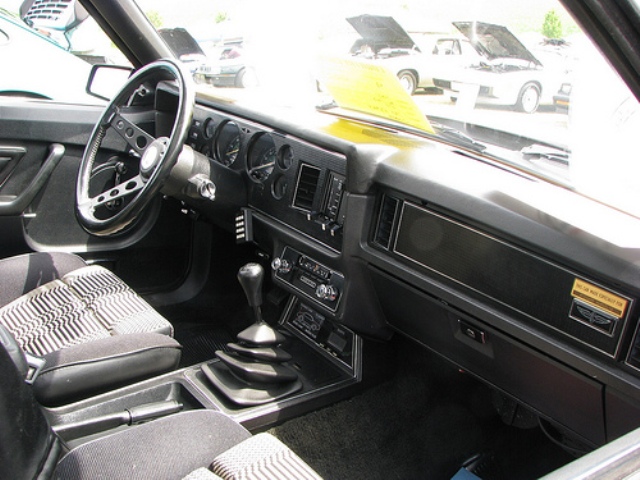
1979 Ford Mustang Pace Car Edition interior
Powering the 1979 Mustang were three engines carried over from the Mustang II and one new power plant never seen before in a Mustang. The wheezy 2.3-litre “Lima” over head cam four cylinder mill returned as the base engine. With 88-horsepower it wasn’t about to set any land speed records and wasn’t exactly the most refined four pot engine on the market. At least with the reduced weight and improved aerodynamics it was a reasonable performer and was stingy enough on fuel to satisfy most people.
Initially the 109-horsepower 2.8-litre V-6 from the previous generation car was offered as an upgrade to the four-cylinder but supply problems forced Ford to drop that engine mid-year in favor of the stone aged 200-ci (3.3-ltre) straight six. This engine was so old that it could trace its lineage all the way back to the base engine used in the 1965 Mustang. Even though it could only muster a paltry 85-horsepower the old six was smooth running, efficient and had gobs of torque that could propel the light weight Mustang from rest with ease. On paper the six might have appeared to be a downgrade but in real world driving this engine was the ticket for those who desired smooth and quiet cruising, plus it had bullet proof reliability, something that the 2.8-litre was lacking.
Next on the option list was the tried and true 302, now dubbed the 5.0-litre. Although it may have produced a mundane 140-horsepower it could at least send the Mustang down the road with some sense of authority and kept the V-8 powered sports car dream alive no matter how dim that dream was. Improvements to the 5.0-litre V-8 included a single serpentine belt to drive the accessories for better reliability and a low-restriction exhaust.
The fourth engine was the biggest news under the hood of the 1979 Mustang. Ford bolted a Garrett AiResearch turbo to the 2.3-litre four-cylinder and this raised output to a respectable 131-horsepower. Although turbo technology wasn’t exactly new, it was still considered exotic technology back in 1979. Porsche and Saab had success with their turbocharged models and even Ford’s cross-town rivals at General Motors had been dabbling with turbochargers since the 1960’s, but this was Ford’s first kick at the can. The reasoning behind adding a turbocharger to the lowly 2.3 was simple in the eyes of Ford. Engineers viewed turbocharging as the performance alternative of the future. They figured this was an easy way to achieve V-8 performance with four-cylinder economy all within the same package. Executives had high hopes and promised remarkable results.
Ford’s first venture into the world of turbocharged engines was relatively simple. The 2.3-litre “Lima” engine was not modified to accept the turbocharger save for a higher capacity Holley carburetor that would allow more fuel and air into the engine. Engineers mounted the turbo high up near the carburetor on the opposite side of the engine from the exhaust manifold and connected the exhaust that is used to spool up the compressor to the turbo housing with a long pipe that passed under the engine.
Normally forced induction engines are modified with strengthened internals to cope with the added stress. Dished pistons are usually installed in order to lower the compression ratio to prevent pre-ignition of the already compressed fuel/air mixture. Instead of making these expensive modifications Ford engineers chose to limit boost to a low 5-psi, just enough to improve the 2.3-litre engine’s performance noticeably. By doing this Ford engineers practically eliminated one of the largest annoyances of turbocharged engines, an effect called turbo lag.
Force fed engines using a turbo often feel underpowered at lower engine speeds until the turbocharger has time to spool up and produce boost. This effect is amplified because these engines often use a lower compression ratio in order to prevent engine damage at higher revolutions once the turbo begins producing boost. However, once on boost these engines can produce a rush of power thrusting the car forward with more force than a normally aspirated version. In the early days many turbo cars had a Jekyll and Hide personality feeling completely underpowered on initial throttle application and then suddenly the driver would be hit with a sudden surge of power as engine speeds climbed high enough to spin the turbo fast enough to produce boost. The Porsche 930 Turbo is a fine example of this dual personality with extreme swings of on/off boost performance that often caught drivers by surprise. The Mustang turbo didn’t suffer from this affliction since it had a high compression, low boost arraignment; however it also didn’t have that upper end surge of performance that some were expecting and enjoyed. Still, the turbo engine looked good on paper.
Great gains were also made in the territory of ride and handing. With the new Fox platform suspension engineers were able to explore new suspension tuning possibilities and achieve results that couldn’t even be dreamed of in past generations. For the first time the Mustang rode on an all coil suspension. In an instant the Mustang suspension components went from old school to modern. Since the new Fairmont/Zephyr shared its architecture with the Mustang both cars used the same basic suspension hardware. Front end suspension components comprised of a unique, modified MacPherson-strut design.
Usually a MacPherson strut has a coil spring wrapped around it and this assembly is mounted on the car as one unit. This offers a compact design especially for front wheel drive vehicles and better suspension geometry. With the Fox suspension system the strut and coil spring are left separated and the spring is mounted on the car between the body structure and lower control arm. This allowed easier servicing since a spring compressor was not required to replace the front struts, yet still allowed all the advantages of a strut design. A front anti-sway bar was standard on every car, with thickness determined by engine and suspension option. Rack and pinion steering and front disc brakes were also standard.
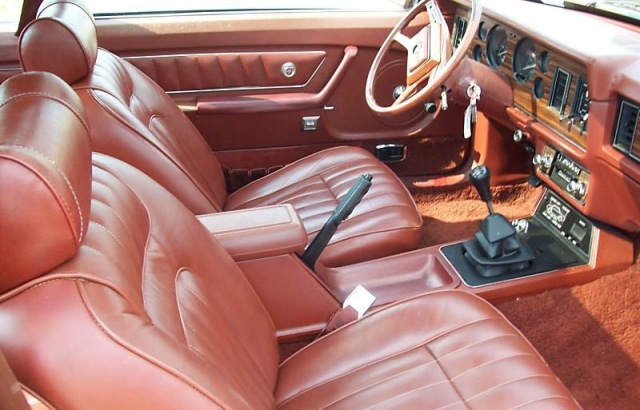
1979 Mustang interior in Ghia trim spec.
The rear axel was located by a new four-link system suspended by coil springs. This arraignment was lighter and far more effective than the leaf spring suspension used in the past allowing engineers more latitude for tuning and offered better ride comfort. When the 5.0-litre engine option was ordered a rear anti-sway bar was automatically installed. This was used more for lateral location of the rear axel than controlling body roll. All models used drum brakes at the rear. Even when equipped with the base suspension the ’79 Mustang was leaps and bounds ahead of the previous Mustang II in terms of ride quality and handling prowess.
Three suspension set-ups were made available for the Mustang in 1979. The basic suspension as described above used skinny tires mounted on 13-inch wheels. Optional was a handling package that came with revised shock valving, stiffer springs, bushings and wider tires wrapped around 14-inch wheels. On six-cylinder cars a rear stabilizer was included as well. The handling package was a tremendous value at just $33 and makes one wonder why anyone would not purchase it.
The handling suspension might have been a great value but the set up to have on the ’79 Mustang was the special TRX suspension package. Designed around Michelin’s new and unique super-low-profile (at that time) TRX tires. TRX tires were the first mass produced low profile tire available. In order to combat a harsh ride comfort that is the result of a lower and stiffer sidewall height Michelin devised a distinct tire bead that better balanced tire stresses between the wheel/tire interfaces. This required wheels that were specifically designed to accept this tire as a standard wheel could not be used. To avoid any possibility of mounting a standard tire on a TRX wheel or vise versa, TRX wheel and tire diameters used metric measurements instead of inches. Ford designed a stunning set of three spoke aluminum wheels for the TRX tires to be mounted on, these wheels alone was worth the cost of the suspension package.
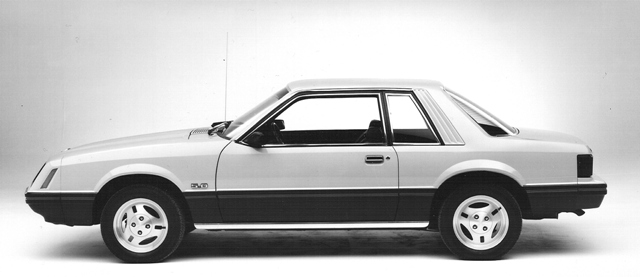
The TRX handling package can be identified by it's unique three spoke wheels.
The TRX package was much more than a set of grippy, low profile tires and pretty set of wheels. The suspension was specifically tuned to take full advantage of the TRX tires abilities. Thicker stabilizer bars were used front and rear. Shocks received their own specific damping and spring rates increased in order to take full advantage of the 190/65R390 rubber. Mustangs equipped with the TRX package were described as being the best handling cars to ever come out of Detroit, easily eclipsing the abilities of any former Mustang.
Three levels of trim were available in 1979; Base, the luxurious Ghia, and the performance orientated Cobra. Cobra models were only available in the hatchback body style and were squarely aimed at enthusiasts with the Turbo engine, four speed manual transmission and TRX suspension coming standard. Exterior features of the Cobra included a non-functional hood scoop (standard on any Mustang equipped with the Turbo engine); blacked out widow frames, body side moldings, lower body and door mirrors; chrome dual tailpipe extensions and a Cobra door decal. Thankfully the horrid hood graphics featuring a lurid snake was optional.
Inside, the Cobra was tastefully adorned with a sporty three spoke steering wheel, a back engine turned instrument panel appliqué in place of the faux wood accents of the other trims and full instrumentation including a 8,000 rpm tachometer. Even though the Cobra was supposed to carry the performance flag any Mustang could be had with the five-litre V-8 or the turbo four engine options along with any suspension option you desired including the awesome TRX package. So in effect you could order a base Mustang or luxurious Ghia with all the go fast goodies.
1979 Mustang Pace Car Edition
For a second time since its introduction in 1964 the Mustang was bestowed the honor of being the pace car for the 1979 Indianapolis 500. For the race Ford made a special hatchback with a T-bar roof and a 5.0-litre 260-horsepower V-8 tuned by none other than Jack Roush. The extra power was required so that the pace car could attain the track’s minimum required speed limit of 120-mph.
To commemorate the occasion Ford offered the public a replica of the pace car. This car had the same unique pewter over black paint scheme and colorful striping. The replica was also adorned with the same front air dam, three slat grille, unique domed hood and rear spoiler from the pace car. In place of the custom made T-bar roof was the flip-up open air sunroof that was optional on other Mustangs.
Inside, the Pace Car Edition had the same black interior trim as a Cobra but the standard seats were replaced with set of stunning Recaro buckets. Leather wrapped steering wheel, Ghia sound insulation package, AM/FM/Stereo with cassette and premium sound were all standard along with power steering and brakes. Buyers had the choice of either the 2.3-litre turbo engine or the 5.0-litre V-8. Unfortunately the special V-8 engine tuned by Roush wasn’t available since it would never pass emissions regulations. This didn’t bother most customers since both engines offered adequate performance.
If you were after the ultimate Mustang in 1979 the Pace Car Edition was the one to have. It looked stunning, had all the creature comforts that one could ever want at the time and it was entertaining to drive. Production of the Pace Car edition was just shy of 10,500 units and Ford sold each and every one of them in short order.
1979 Mustang on the road
All the hard work and money invested in the 1979 Mustang paid off. Press reviews of the car were glowing and many touted this Mustang as the best Ford ever made. This is the car that the embarrassing Mustang II should have been. Handling and ride were good for cars equipped with the base suspension and when equipped with the special TRX suspension were considered to be some of the best handling American made cars made up to that point. Interior room and comfort were class leading and fuel economy was very good with most engines. The base 2.3-litre four was still too noisy an rough to be considered a good choice but the 2.8-litre V-6 engine and TRX suspension combination was considered to be a decent choice for those who cherished handing and smooth engine performance; for as long as it was available anyway.
For those who desired the best acceleration possible in their Mustang the engine of choice was the 5.0-litre V-8 and although it could not match the performance of V-8’s from the muscle car era it did provide enough kick to be entertaining. However; it was the turbo-four that Ford was really trying to promote. Ford promised V-8 performance with the fuel economy of a four cylinder and though that might have been a stretch on both counts the turbo did offer brisk acceleration and decent mileage. Additionally turbo cars equipped with the TRX suspension had the side benefit of being the best handling Mustang available. Because of its light weight engine, turbo Mustangs had better weight distribution and therefore responded crisply when cornered hard making for one sublime handling car. The new 1979 Fox body Mustang proved to be a huge sales success for Ford, selling a staggering 370,000 units in its first year of production. Ford obviously got the Mustang’s mojo back.
However not was all perfect, the 1979 Mustang did have some disconcerting flaws. The 5.0-litre V-8 was heavy and that extra weight up front would cause the car to understeer severely in corners, even with the top suspension option. Worse yet the car suffered from extreme wheel hop on acceleration. The potentially dangerous situation was exemplified on V-8 powered cars whose torquey engine would send the rear axle into a violent, uncontrollable hop as the skinny tires would grip the pavement and then send the wheels catapulting up into the wheel wells.
Then there was the 2.3-litre turbo four that Ford had aggressively promoted as the solution for boredom for power hungry but fuel conscious enthusiasts. Although performance was decent, the 2.3-litre turbo was just as noisy and rough running as the base 2.3-litre four-cylinder engine. It didn’t exactly exhibit the smooth and quite operation that most customers expect from a premium engine. Some people were willing to overlook this, however the engine’s other issues were unforgivable. On paper the turbo had huge potential however in practice it was a let down, not for its performance mind you but for its reliability, or lack there of.
After few months on the market the turbo turned into a reliability disaster. It suffered from numerous oil leaks and drivability issues. Heat from the red hot turbocharger that was located under the carburetor would heat soak the carburetor to the point that vapor lock would occur making the car nearly impossible to start after being run. Turbo Mustangs also suffered from pre-ignition causing an auditable pinging sound to emanate from the engine compartment despite Ford’s best efforts to curb the issue with revised ignition timing. This would force owners to use more expensive premium fuels or additives. Many owners also suffered premature turbocharger failure due to inadequate lubrication. Ford quickly learned that turbocharging was a much more complex undertaking than just bolting a turbocharger to an engine. Even with these issues many could see the huge potential that lay within the Fox body Mustang. With more development the car could become a legendary road machine.
1980 and 1981 Mustang
The next two model years little change was made to the Mustang line-up. The car was popular Ford saw little reason to change a good thing. However these two years did represent another low point for Mustang performance. Because of the availability issues in 1979 the 2.8-litre V-6 was completely dropped from the Mustang option list. Now the 3.3-litre was the sole six-cylinder available and although the engine was the best choice of the bunch for everyday driving, it really wasn’t a sporty engine. The noisy and rough base 2.3 four and the troublesome turbo carried on unchanged.
But a huge blow was dealt when the much loved 5.0-litre was dropped in favor of the fuel conscious 4.2-litre (255-ci) V-8 with an embarrassing output of 119-horsepower. Just as it appeared that the Mustang was making a comeback its most powerful engine was discontinued. Memories of the dark days when the Mustang II was in showrooms came flooding back. Because of spiking fuel prices Ford had made the corporate decision to reduce the size of the 5.0-litre engine. They accomplished this by reducing the engine block cylinder bore and therefore create a smaller; more fuel efficient V-8. In doing so Ford effectively castrated the performance of the V-8 and created an engine that was better suited for use as a boat anchor..
Even worse the engine was initially offered only with an automatic transmission that blunted the performance even further. Thankfully a manual gearbox was made available midyear when someone in the Ford offices came to their senses. The 4.2-litre V-8 was so bad that only 2.7 percent of customers opted for a V-8 in 1980. This left the troublesome 2.3-litre turbo as the only viable option for performance minded drivers. Just as it seemed the dark days of the 1970’s were behind them, Mustang enthusiasts were once again thrust into the darkness with the start of the 80’s.
But it wasn’t all bad news. The Cobra received some significant visual upgrades. By adding the styling effects from the Pace Car Edition the Cobra was given its own identity from the standard car apart from some goofy decals. Yes the ridiculous Cobra hood decal was still optional but the rest of the car looked sensational. I can remember back to the early 1980’s that my older brother had a friend who drove several 1979-1981 Mustang Cobras’. I say several because in the hands of him and his siblings these cars had a life expectancy of only a few months before being written off in spectacular fashion. Even as a young kid I adored those cars spending hours in the driveway gawking at them, wishing I was old enough to get behind the wheel. However even at my young age I despised those horrid hood decals and would fantasize about peeling them off in the name of good taste.
Nineteen eighty-one proved to be an even bleaker year for gear heads as the unreliable turbo was quietly removed from the line-up during the year. The numerous problems with the engine proved to be insurmountable and Ford realized that they were over their head and would need to start over in order to have a successful turbo engine program. This left the anemic 4.2-litre V-8 as the sole engine that could produce more than 100-horsepower and it could barely accomplish that.
News for 1981 wasn’t all bad. A much needed five-speed overdrive manual transmission was now optional however the transmission did have one curious anomaly. Mysteriously Ford located fifth gear to the right fourth, instead of its natural position of up to the right. Why they did this is unknown and for whatever reasoning they had it just didn’t work. One very welcome change was that Ford saw fit to offer a T-bar roof option for those who missed the feel of open air driving. If the Mustang wasn’t fast at least it looked good and one would feel good driving it with the wind in your hair. Fortunately Ford was busy reading a remedy for the Mustang’s sober performance and it would be one hell of a cure!
1982 Mustang
“The Boss is Back!” proudly proclaimed Ford Motor Company promotional materials for the 1982 Mustang GT. After a 13 year absence the GT made a triumphant return to the Mustang line up. Also making a comeback was a retuned 5.0-litre High Output V-8. Just as everyone was starting to write off the Mustang as a true performance car Ford shocked everyone with the High Output V-8. This turn of events was made possible by Donald Peterson who was promoted to be the Ford Motor Company president in March of 1980. It was Peterson who encouraged Ford to get back into racing and formed Ford’s Special Vehicle Operations (SVO) department later that year to develop race cars and high performance street vehicles. Another one of his goals was to bring back some fun to the Ford line-up and the first vehicle to receive some attention was the Mustang.
For 1982 Ford completely revamped the Mustang’s model line. Base and Ghia trim lines were replaced by three new models; base L, mid-line GL and luxury GLX. The Cobra was discontinued and replaced with the GT as the performance flagship. Engines were mainly carried over from 1981. Base engine continued to be the 2.3-litre four and making their final appearance were the optional 3.3-litre inline six and the wheezy 4.2-litre V-8. The real cause for excitement however was the return of the 5.0-litre V-8 that was standard in the GT and made available in the other models as an option.
Nineteen eight-two was a turning point for American performance vehicles and the introduction of the 5.0-litre H.O. played a major roll. Careful modifications to the High Output 5.0-litre brought about the most potent small-block V-8 in nearly a decade. Although not radically changed, the 5.0-litre now produced 157-horsepower; a number that might seem laughable now but represented a solid improvement for the time. To gain the additional grunt engineers installed a larger 356-cfm two barrel carburetor mounted on an aluminum intake manifold. Resting on top of the carburetor was a huge dual snorkel air cleaner with flexible tubes connected to the inner fender panels so that cool, dense air could be drawn in from just ahead of the front wheels. A Ford marine engine high lift camshaft was installed allowing the engine to breath better. Stiffer valve springs were used and a double-row roller timing chain replaced the standard link chain used previously. Exhaust gases were handled by a 4-into-1 exhaust manifolds that dumped into a two and a half inch tuned single exhaust.
The power rating may have seemed low but Ford engineers used a few additional tricks to extract the maximum amount of performance. Under wide open throttle conditions the air conditioning compressor was cut by a clutch on the drive hub; the air pump was cut out completely, and the engine cooling fan was also disengaged via a clutch on its hub. This trickery reduced the parasitic loss from the engine accessories and allowed the engine to spin with greater ease. With these modifications the 5.0-litre H.O. was capable of having a 6,000-rpm rev limit and could produce power above 4,000-rpm, a region where the previous engine would run out of breath and fall on its face. The 5.0 H.O. gained credibility on the street and 1982 was the genesis of a modern legend with the numbers five-point-oh representing speed and power.
The 5.0-litre H.O. was much more than an engine option it was sold as a complete package that could be ordered on any 1982 Mustang. When the engine was ordered Ford included power steering and brakes, handling suspension, 4-speed manual single-rail overdrive transmission, Traction-Lok limited slip rear axle with a 3.08:1 ratio as obligatory additions. In order to combat the dreaded wheel hop that affected any Mustang with a hint of power Ford added a pair of gusseted rubber covered bars welded to the axle housing. When the axel housing would rotate under hard acceleration the rubber covered bars would contact the lower control arm controlling wheel hop. This might appear to be a crude solution however it did greatly improve the drivability of V-8 powered Mustangs under hard acceleration situations..
1982 Mustang GT
Ford’s hopes for generating excitement for Mustang in 1982 rested squarely on the shoulders of the new GT. General Motors had just launched the striking new Camaro/Firebird twins and the three year old Mustang required an injection of excitement to keep it relevant in the minds of the public and press with all the attention being heaped on G.M’s. titillating new pony cars. Ford not only wanted to match the Camaro/Firebird in terms of performance it wanted to beat them and the 1982 Mustang GT was the first salvo in the pony car wars of the 1980’s.
The GT was the top-of-the-line Mustang in ’82 replacing the Cobra. As such the 5.0-litre H.O. V-8 was standard equipment and only available as a three-door hatchback. Ford aimed the GT at a more sophisticated audience so they wanted to go for a more mature look. Thankfully this meant that the psychedelic graphics and colours from the Cobra were no longer available. Designers did retain the Cobra’s front air dam, three bar grille, hood scoop and rear spoiler thus retaining an aggressive look. Paint colours were restricted to red, black or sliver with a red or black interior. Mirrors, window trim, door handles and wiper arms were all blacked out and the grille and headlamp buckets were finished in body colour rather than black to give the car a more “European” appearance. European influence continued on into the interior with every knob, handle and control receiving the back treatment. This Mustang didn’t have a stitch of chrome or bright-work anywhere.
To go along with the up-market image the GT was generously appointed with four-spoke steering wheel, centre console with graphic display, map light, handling suspension, aluminum wheels wrapped with P185/70R14 tires, fog lamps and twin remote mirrors as standard equipment. Popular options included air conditioning, premium sound, open-air sunroof or T-bar roof and light group. The astonishing TRX suspension was optional and should have been considered mandatory for any Mustang GT buyer. For those who value comfort a magnificent pair of body hugging Recaro seats were available. Not only were these seats comfortable and stylish they were capable of holding the driver in place while they explored the Mustang GT’s handling limits.
For its day the 1982 Mustang GT out paced, out cornered and could stop better than more expensive cars offered from both domestic and import manufacturers. The car was balanced, poised and well constructed offering drivers an experience that had never been available in a Mustang. For the first time in many years Mustang fans had a car that they could be proud of, offering good looks and the best performance value per dollar at the time.
Although the 5.0-litre H.O. was only rated at 157-horsepower the Mustang GT felt as if it was a much more powerful car. Compared to the 200-horsepower 1982 Chevrolet Corvette, a Mustang GT could beat the Chevy to 60 miles an hour from a standing start by a second and it cost $10,000 less! Ford was able to grab the attention away from the sexy Camaro and Firebird by offering an exhilarating car for those on a budget and in doing so ignited an epic battle between Ford and G.M. It was Mustang versus Camaro and Firebird in a fierce fight for pony car supremacy that would last nearly twenty years. It appeared that the dark days of decreasing performance and mediocre motor cars was finally over however this was just the beginning, some of the best pony cars in history were yet to come.
Click here to continue reading on the next page about the ever increasing performance of the Foxbody Mustang...
Most Popular Articles

Japanese Nostalgic Vehicles: The next trend in classic cars
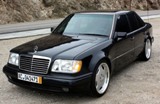
Five Sports Sedan's I'd Love to Own
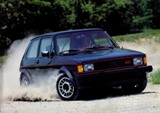
Hot Hatchbacks From the 1980's

Volvo 200 Series: An Unappriciated Classic

Triumph TR-6: Music to Anyone's Ears
Fifty Years of Mustang
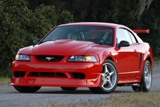
1999-2001 Ford Mustang SVT Cobra
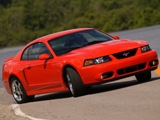
2003-2004 Ford Mustang SVT Cobra
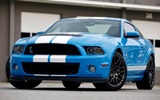
2010-2014 Ford Mustang Shelby GT500
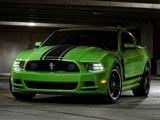
2012-2013 Ford Mustang Boss 302
Driven

Volvo 200 Series: An Unappriciated Classic

Triumph TR-6: Music to Anyone's Ears
1993 Nissan Skyline GT-s and GT-R Coupe

